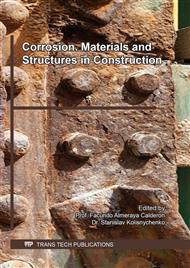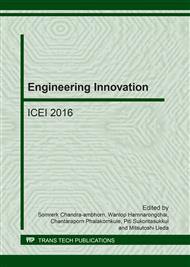p.359
p.367
p.373
p.379
p.384
p.390
p.396
p.402
p.411
Service Life Extension and CO2 Emission due to Silane Treatment on Chloride-Exposed Concrete Structures
Abstract:
This study presents assessment of the environmental impact in terms of the CO2 due to silane treatment for extending corrosion-free service life of concrete structures under chloride attack. To achieve this, there are two issues to be addressed; prediction of corrosion-free service life extension, and assessment of the amount of CO2 emission. In predicting the corrosion-free service life extension, the behaviors of chloride diffusion before and after time-based silane treatment are considered. Then, the cumulative CO2 due to silane treatment is accordingly calculated. The ratio of the corrosion-free service life extension to the cumulative CO2 is defined as the effectiveness of silane treatment, and used to compare different silane treatment strategies.
Info:
Periodical:
Pages:
384-389
Citation:
Online since:
January 2017
Authors:
Keywords:
Price:
Сopyright:
© 2017 Trans Tech Publications Ltd. All Rights Reserved
Share:
Citation:



